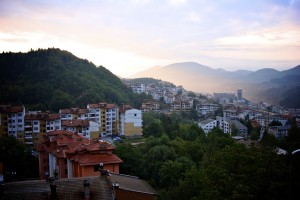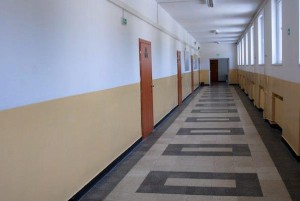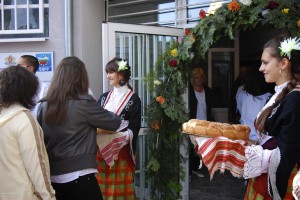Right now I have 36 Facebook friend requests pending from my students. I haven’t quite decided what to do with them.

According to socialbakers.com, Milka is the second most popular brand for Bulgarians on Facebook… I totally understand why!
About one-third of Bulgaria’s population is on Facebook, which includes nearly all of my students. On the first day of school I told my students plainly, “I won’t be your Facebook friend until after this year is over.” Hello, boundaries!
Instead, I tried to engage my students through Facebook groups– one for each grade level I teach. After I had set these groups up, I told each of my classes about them, expecting they would use the search function and join. For one grade level where all my students had Facebook accounts, I even assigned Facebook “homework” asking them to join the group and make three comments on the photos I would post.
No takers. On Facebook homework.
Really?!?
In the last few weeks I have had more students join the groups, thanks to the help of one of my colleagues. The teachers at my school (who I am friends with on Facebook) have few qualms about befriending their students online. One such teacher joined the groups to help me invite and add students. Even so, most students do not post or participate in the discussions. I wonder if befriending students on Facebook would give them more contact with American culture/media, and help my understanding of Bulgaria by forming “friendships” and getting more perspectives on life in Smolyan. Many Fulbright English Teaching Assistants here are friending their students and getting a lot out of that bond. It makes it easier to learn names at the very least.
I’m sure I don’t have to tell you that student-teacher relationships and social media don’t always mix well. During the first few weeks, a Fulbright friend of mine here posted about her frustrations with classroom discipline and student conduct on her personal tumblr. They were things that many of us Fulbrighters were thinking/feeling, but said in excessively strong language (read: like a sailor). Bulgarian students are a tech-savvy bunch, and it wasn’t long before her students read her post. Hours later she had an anonymous and threatening message sent by someone claiming to represent a group of her students. The conflict eventually resolved itself, but it was unnecessary drama that might have been prevented through self-censorship or distancing online and real-life identities.
So, should I break my own rule and friend my students early? If I did, would it mean I would have to stop sharing snarky, aggressively liberal Jezebel articles on my Facebook timeline? Or should I wait until the end of the year and possibly miss out on legitimate cross-cultural friendships?









